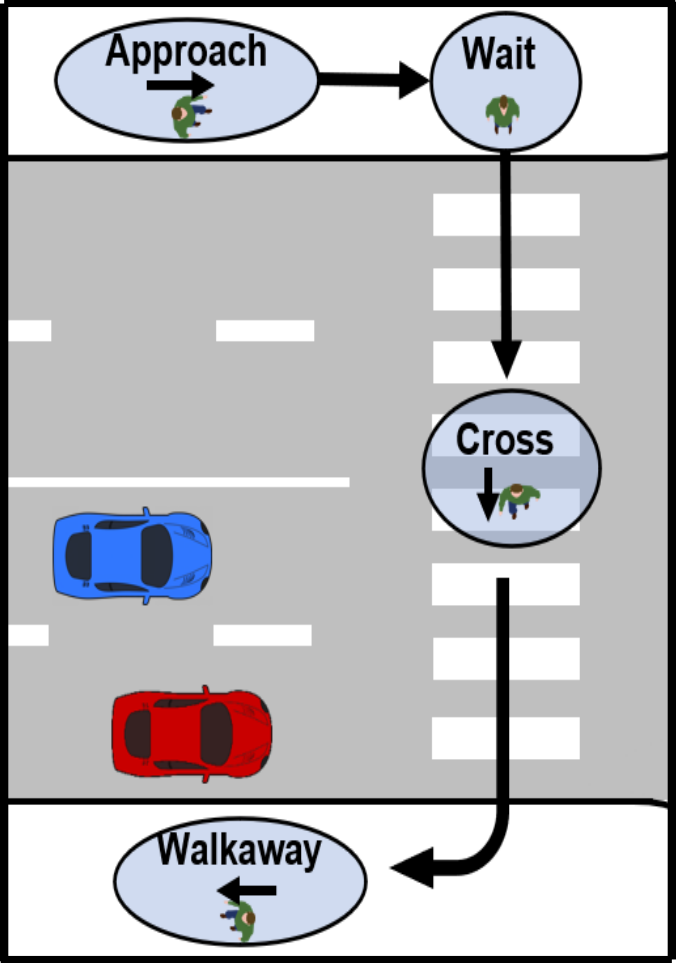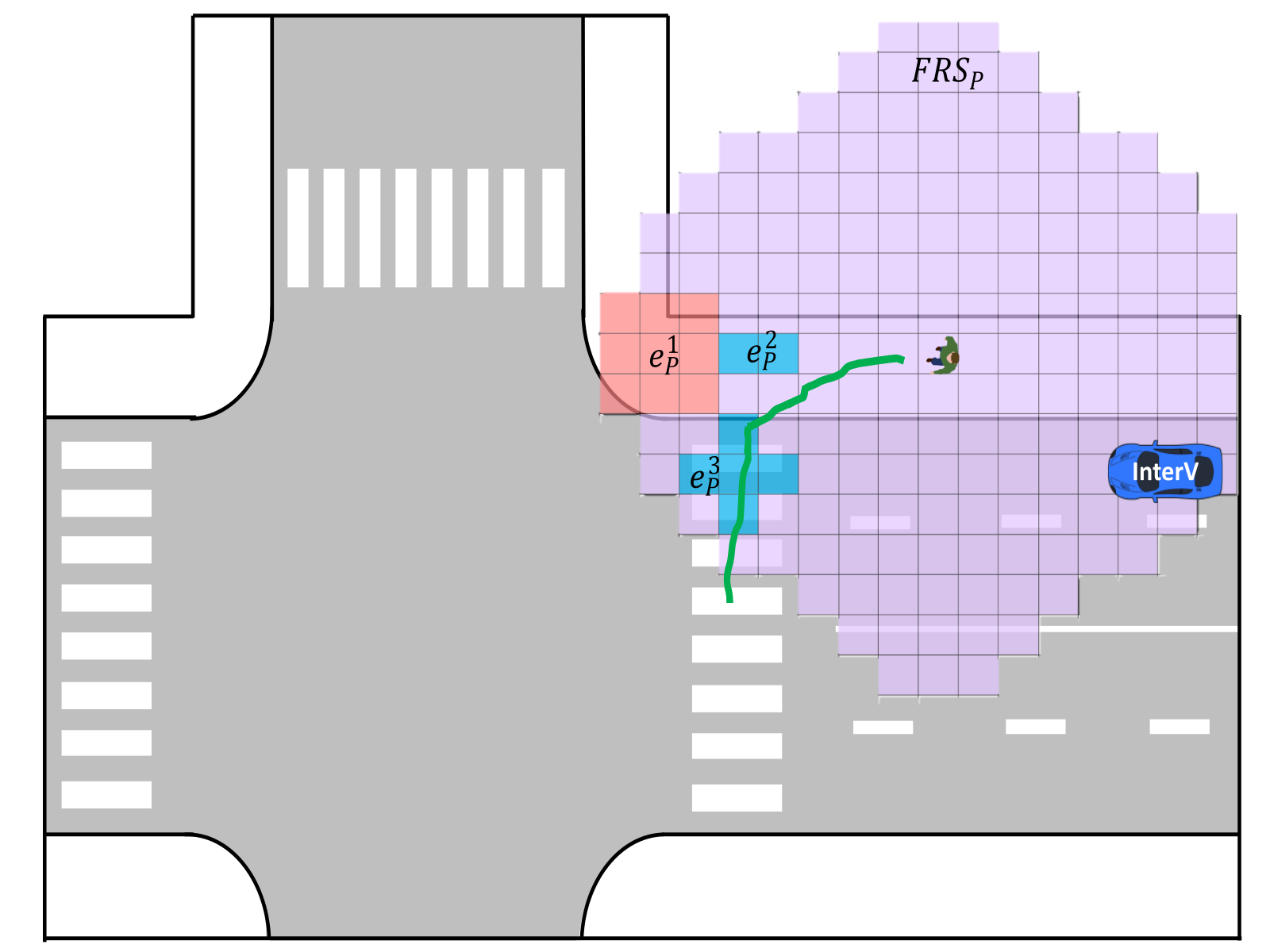Pedestrian Intent and Behavior Modeling for Autonomous Driving
Creating probabilistic hybrid automata models to predict pedestrian intent and trajectories for safe AV planning
This research area focuses on developing models to accurately predict the future behavior (actions and trajectories) of pedestrians, which is a major operational challenge for Automated Vehicles (AVs) in urban environments. Pedestrian behavior is complex due to its inherent uncertainty and multimodal nature.
I developed explainable pedestrian behavior models based on hybrid automata theory to model and predict (long-term, 5-10 seconds) their crossing behavior at intersections. The models account for pedestrian decision-making points, such as deciding whether to cross the street or waiting for a suitable gap. Unlike some prior work that assumed all pedestrians intended to cross, this work separately models a pedestrian’s intent to cross, leading to less conservative predictions. The model predicts both high-level actions (approaching, waiting, crossing, walking away) and low-level continuous motion evolution. The MHP model was validated on both real-world and virtual datasets involving interactions with human-driven and automated vehicles. The resulting probabilistic predictions from these models can be utilized for AV motion planning to help the AV safely navigate around pedestrians and avoid collisions.


The resulting automaton model is more likely to predict the ground truth trajectory compared to two baseline models - a baseline hybrid automaton model and a constant velocity model. The MHP model is applicable to a wide variety of urban scenarios including midblock crosswalks, intersections, one-way, and two-way streets, and the probabilistic predictions from the model can be utilized for AV motion planning.

e 1p, e 2p, and e 3p are prediction envelopes at prediction time step t p. e 1p is the prediction envelope of the constant velocity model and e 2p and e 3p are the prediction envelopes corresponding to two possible future behaviors—waiting by the crosswalk and crossing—identified by the MHP model. FRSP is the forward reachable set at t p assuming the pedestrian could have walked in any direction with a maximum speed of 2.5 m/s. The green line indicates observed ground truth trajectory up to time and the solid orange line indicates the ground truth trajectory after t p . The constant velocity predicts envelope e 1p based on the initial heading of the pedestrian. However, the pedestrian turns to cross at the crosswalk, which is captured by the prediction envelope e 3p of the MHP model.